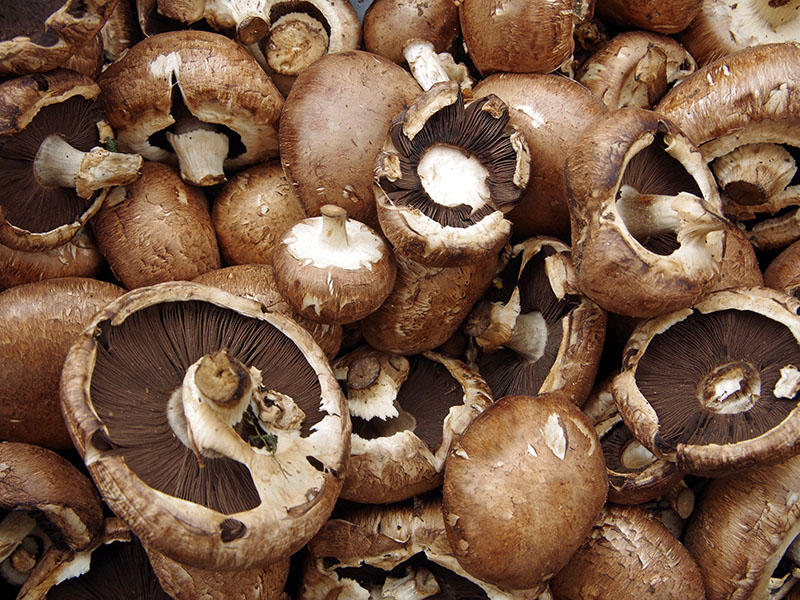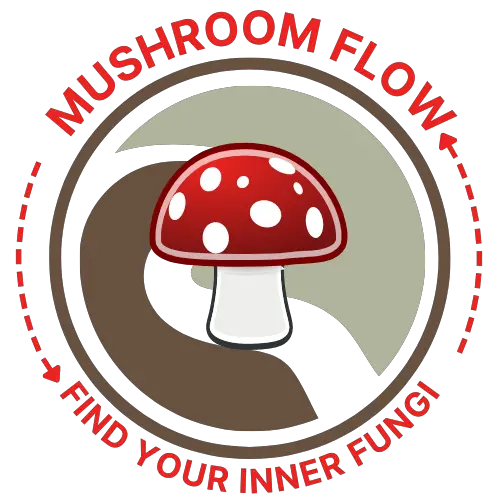First recognized in the 1700s, the popularity of portobello mushrooms increased in the 1980s with the shift toward healthier food. The name may sound exotic, but portobellos are commonly available at local grocers and even online. So why are portobello mushrooms so expensive?
Portobello mushrooms are more expensive because they are sensitive to environmental changes and they take longer to grow as the mature stage of white button mushrooms.
That being said, portobello are not the most expensive mushroom. There are several other mushrooms that are more expensive which we’ll cover at the end of this post. Let’s find out why portobello mushrooms are unique, somewhat pricey and which mushrooms are similar.

Portobello Mushrooms up Close
As with all mushroom varieties, portobello mushrooms are fungi with the unique status of being among the oldest types of life on earth. They are the same species as white button mushrooms and crimini (sometimes called baby bellas) which is the most popular species.
A portobello mushroom cap may grow up to 6” in diameter. The size makes them perfect for stuffing, making them ideal for vegetarians and vegans. Of course, popularity and functionality are two other reasons driving the price of portobello mushrooms upward.
What do Portobello Mushrooms Taste Like?
Portobellos have an umami flavor, meaning they’re earthy and savory. In Japanese, umami means “essence of deliciousness.” Since they have a mild briny flavor, portobellos are also great additions to seafood dishes or even as substitues for crab and lobster.
Buying and Storing Portobello Mushrooms
Because they’re expensive, you will want to know how to select the best portobello mushrooms and how to store them effectively for the longest shelf life. Always look for firm mushrooms without bruises or soft spots. You’ll want to get them just before cooking because they can spoil quickly.
Store your portobello mushrooms in the refrigerator in a paper bag. While good storage containers work well for other products, they can promote harmful bacterial growth in mushrooms.
Where can I get Portobello Mushrooms?
Many supermarkets carry fresh portobello mushrooms. If yours doesn’t, try a local farmer’s market or specialty market. They are at their prime during late spring and fall.
Foraging portobellos
If you feel adventurous, you can forage for portobello mushrooms. They can grow year-round in areas with ample sunlight and moisture. After heavy rain, you’ll locate them where there is compost or decay. Look at wet logs, grasslands, and bushes with shade.
TIP: It is inadvisable to eat wild mushrooms unless you’re an expert. You should have them checked. One edible fungus can look very similar to one that is poisonous.
Cultivating portobello mushrooms
Those who enjoy gardening will find growing portobello mushrooms reasonably easy. First, you will need a planting bed where they can receive suitable moisture. The soil bed should be 6-inches long and 8-inches deep.
Portobellos need to be grown in an area where the temperatures don’t dip below 50F or exceed 70F. If you encounter temperatures beyond this range, the best thing is to move the soil bed or try growing them indoors in a dark room.
Fill the bed with compost. Mix the mushroom sports into this medium about 1-inch deep. Top with peat moss (1”) and a layer of newspaper on top. Using a spray bottle, water the newspaper top daily if they are inside. Outside you should water twice daily.
After 14 days, pull off the newspaper gently to check progress. There should be small pins in the peat moss. Replace the paper and continue the watering cycle for another week. Be patient. You want the mushroom caps to be about 2 inches in diameter before harvesting. A visual cue is that the cap becomes flat instead of curled.
Buy portobellos online
There are companies, like these on Amazon, that sell dry and fresh portobello mushrooms. The total expense depends on location (due to shipping), if they’re posted for overnight or express delivery, and quality. It’s a good idea to take the time to read customer reviews before buying.
Which Mushroom is Similar to Portobello?
Cremini mushrooms have the same dark brown color as portobellos and a smooth cap. They’re very savory, tasting much like a portobello, and there’s an extremely good reason for the similarities. Portobello mushrooms are simply mature Cremini mushrooms. That’s why they’re frequently marketed as “baby bellas.”
Here’s a flavor profile and cost comparison of some common culinary mushrooms, not including truffles since they are technically a different species.
| Mushroom | Flavor and Texture | Approximate Price / Pound |
| Portobello Mushrooms | Rich flavor; meaty texture | $6-$8 |
| Shiitake Mushrooms | Delicate, umami flavor; medium texture | $12-$14 |
| White Button Mushrooms | Mild flavor; medium texture | $3-$5 |
| Crimini (Baby Bella) Mushrooms | Earthy flavor; firm, meaty texture | $6-$8 |
| Enoki Mushrooms | Delicate flavor; crispy texture | $4-$6 |
| Oyster Mushrooms | Mild, briny flavor; medium texture | $8-$12 |
| Lion’s Mane | Mild seafood like; eathy overtones | $10-$40 |
| Porcini | Intense, nutty flavor; delicate texture | $30-$60 |
Final Thoughts
Even if you’ve cooked with portobellos, you may not know that they’re packed with goodness.
You will love the fact that portobello mushrooms are low in fat and calories, so they’re a great addition to a diet plan (they feel filling). About 3.5 oz. of portobello mushrooms only have 22 calories. It’s worth spending a little extra money on portobello mushrooms because they offer high-value nutrients, too, including
- B vitamins
- Copper
- Phosphorus
- Potassium
- Selenium
Mushrooms have the distinction of being the only source of vitamin D that doesn’t come from animals. Commercial growers use UV light on the mushrooms to amp up the vitamin D content.
Finally, portobello mushrooms contribute to intestinal health. This, in turn, supports a healthier immune system.
In the end, even though portobellos might cost more (and the price differences are huge depending on where you shop), the flavor and nutritional value are sound selling points.
